How a 2 Way Switch Wiring Works?

A 2 way switch wiring works by allowing the control of a single bulb (or other electrical fixtures) from two different locations. This setup is commonly used in areas such as stairwells, hallways, or large rooms, providing convenient access to turn the light on or off from either end.
What is the application of two way switch?
The application of a two-way switch is primarily found in controlling a single bulb from two different locations. This type of wiring is commonly used in staircases, hallways, and large rooms, offering convenience and flexibility in lighting control.

What are the advantages of a two-way light switch?
The advantages of a two-way light switch include added convenience and energy efficiency. Unlike traditional single switch systems, two-way switches allow you to control a single light source from two separate locations.
This is particularly useful in long hallways or staircases, where it enables the ability to switch a light on or off from either end. Additionally, in rooms with multiple entry points, these switches eliminate the need to walk across the room to operate the lights.

From an energy-saving perspective, being able to easily control lighting reduces the chance of leaving lights on in unoccupied rooms, thereby saving electricity.
However, the installation of two-way switch systems can be more complex than the standard one-switch setup. This complexity often requires more wiring and a deeper understanding of electrical circuits, as each switch must be connected by one wire that carries the line (live) wire to the bulb.
If not installed correctly, it can lead to malfunctioning switches or even pose safety risks. Despite this, the versatility and utility of two-way switches control make them a popular choice for many households.

What is the working principle for a two way switch?
For a two way switch, the working principle revolves around its ability to control a light or electrical circuit from two different locations. This is achieved using two switches or two way switches, which are connected in such a manner that they can control the flow of electricity to a light or appliance.
The first switch in this setup may alter the direction of the electrical flow to a second switch, which then completes the circuit, allowing the light to turn on. Unlike conventional light switches where one switch controls the flow of electricity, two-way switches add a layer of convenience and flexibility.
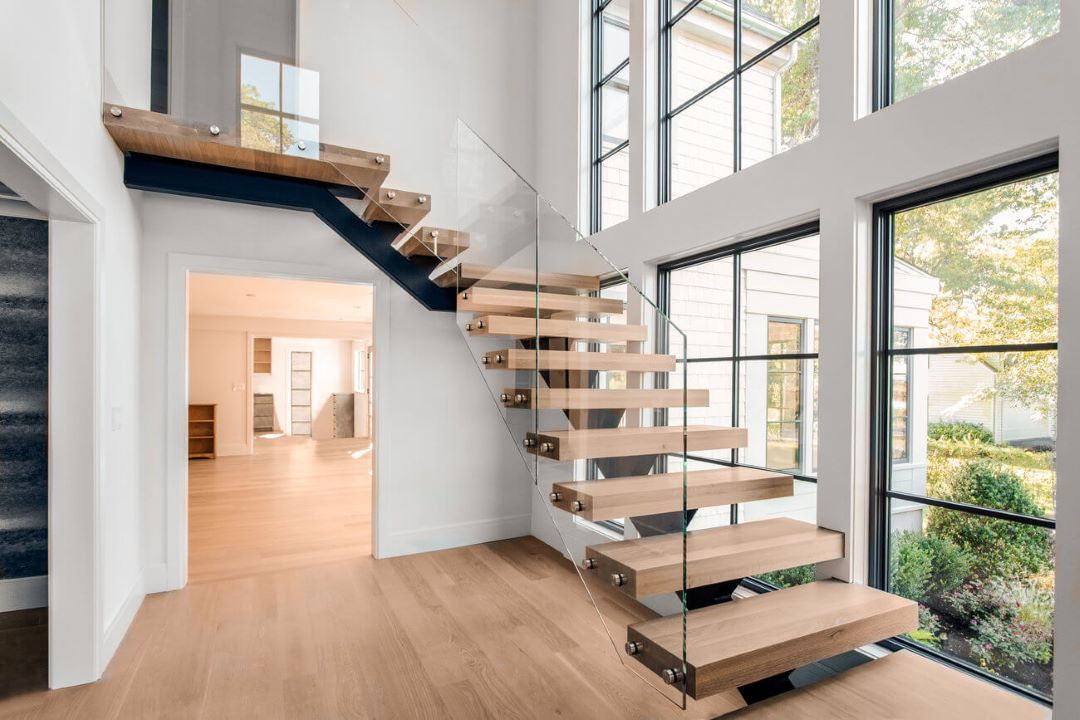
In residential settings, two way switches are commonly used in hallways, staircases, or any large rooms with multiple entrances, allowing the control of lighting from two different positions.
In industrial settings, the application extends to control systems requiring the operation of equipment from multiple locations. The essential components include the live wire that connects to the first switch, which can then be toggled between an open circuit and a closed circuit by changing its position.
The second switch has the ability to either continue the circuit, allowing the AC supply to reach the bulb when in one position, or create an open circuit in its alternate position.
This interconnected setup of two way switches ensures that one switch can always alter the state of the light, regardless of the position or the state of the other switch.
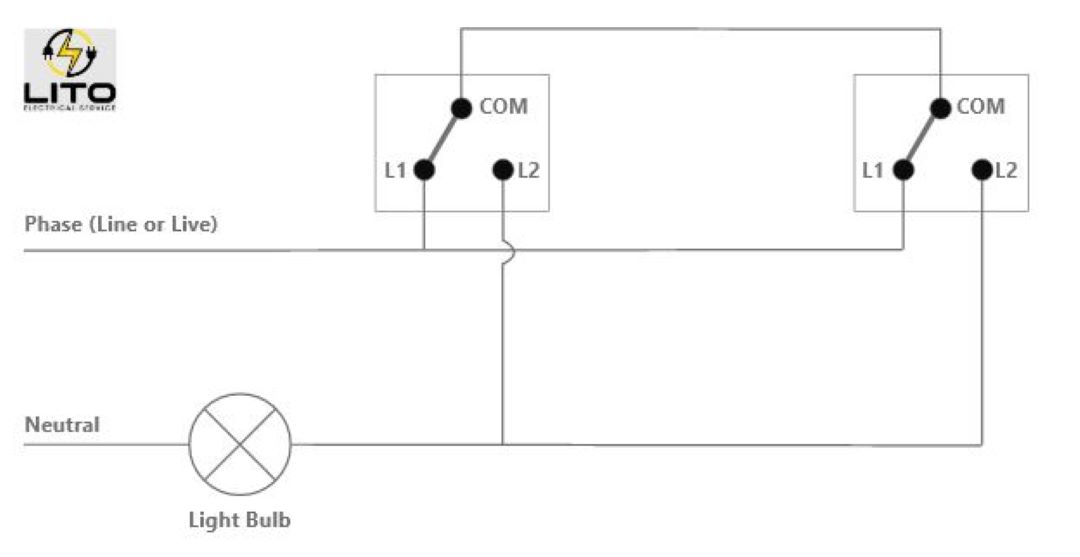
What is the standard 2 way light switch wiring diagram?
The standard 2 way light switch wiring diagram showcases the wiring connections that allow for the control of a light source from two separate switches.
This standard method (3-wire) is achieved through a specific wiring method that allows the switch to toggle the circuit between open and closed states, effectively turning the device on or off.
To turn a light on and off from 2 different locations, we need 2 Single Pole Double Throw or SPDT switches. A SPDT is called a 2-way switch in the European Union, and a three-way switch in North America.
A SPDT switch consists of three terminals: one input terminal (COM) and two output terminals (L1 & L2). During the wiring process, the live wire of the AC supply, which introduces electricity into the circuit, is connected to the L1 terminals of both switches.
Then, the L2 terminals of both switches are connected to one terminal of the light bulb, while the other terminal of the light bulb is connected back to the neutral wire of the power supply.
To complete the circuit and allow the lights (or device) to operate, both the COM terminals are connected together. This connection only completes the circuit if both switches are in their proper positions, enabling the flow of current.
This 2 way switch wiring diagram effectively demonstrates how two-way switches, when correctly connected, offer flexibility and convenience in controlling light sources. The principle behind the two-way switch resembles an "ex or" gate in digital electronics, where the light is activated when switches are in alternate positions.
This arrangement allows either switch to alter the circuit's state, either completing or interrupting it, thereby providing the flexibility to turn the device on or off from two different locations. The use of the L1 and L2 terminals is key in changing the circuit from open to closed, or the reverse, depending on what is needed.
What is the difference between a 1 way and 2 way switch?
Between a 1 way and 2 way switch, the difference is primarily in how they allow for the control and direction of electrical flow.
A 1 way switch is the most basic type, designed with only two terminals; it simply turns a light or appliance on or off from a single location. Conversely, a two-way switch wiring system involves two switches connected through two wires, where each switch can control the light or appliance from different locations.
In a two-way switch wiring setup, when the first switch is flipped, it connects one terminal to the com terminal, allowing current to flow. Flipping the second switch changes the connection to the other terminal, completing a different circuit. This setup enables users to control a single light or appliance from two locations.
Essentially, two-way switches are connected with the com terminals and the wiring arranged so either switch can independently change the switch position, affecting the flow from the connected terminal to either the first switch's com terminal or the second, through the neutral path.
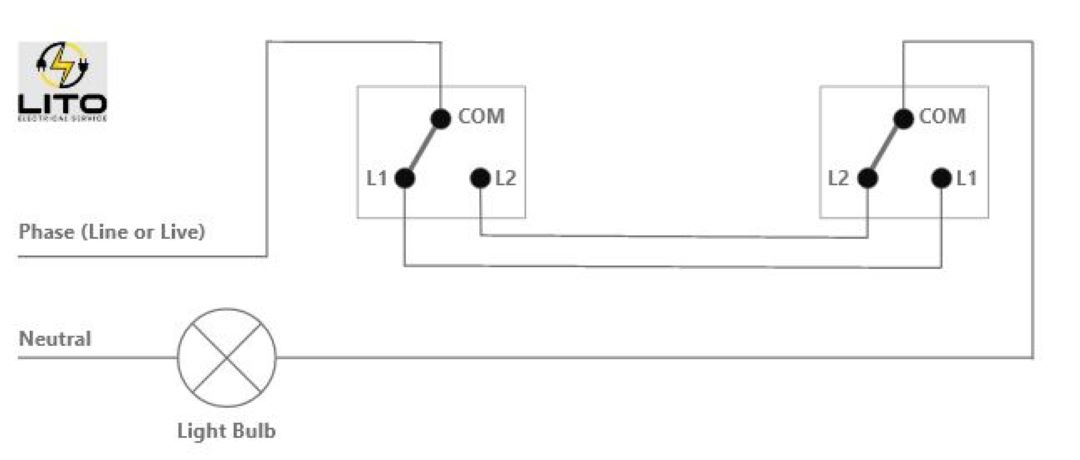
How is a two-way switch wired using alternative method?
A two-way switch is wired using the alternative method (2 wires) by connecting the AC power supply to the COM terminal of the first switch, next the neutral wire goes from the COM terminal of the second switch, then connected to the light fixture and then back to the AC power supply.
The L1 and L2 terminals of both switches are interconnected, ensuring that changing the state of either switch will control the light. This setup allows the switches to control the light either in an 'on' or 'off' state, regardless of the position of the other switch.
Using this 2 way switch wiring alternative method saves electrical cable, however, it is not being preferred anymore as the Phase and Neutral may come from different lighting circuits breakers.
Another major flaw is electromagnetic (EM) interference. Any current carrying conductor emits electromagnetic radiations. If the Live and Neutral wires are placed in close proximity, this causes your electrical device or appliance to be energized and it will be more easier to get an electric shock.
Using this alternative wiring method, there is a possibility that the neutral and live wires are being run separately at different parts of the house, making the wires a giant induction loop. This will definitely cause interference problems with other EM and RF Signals.
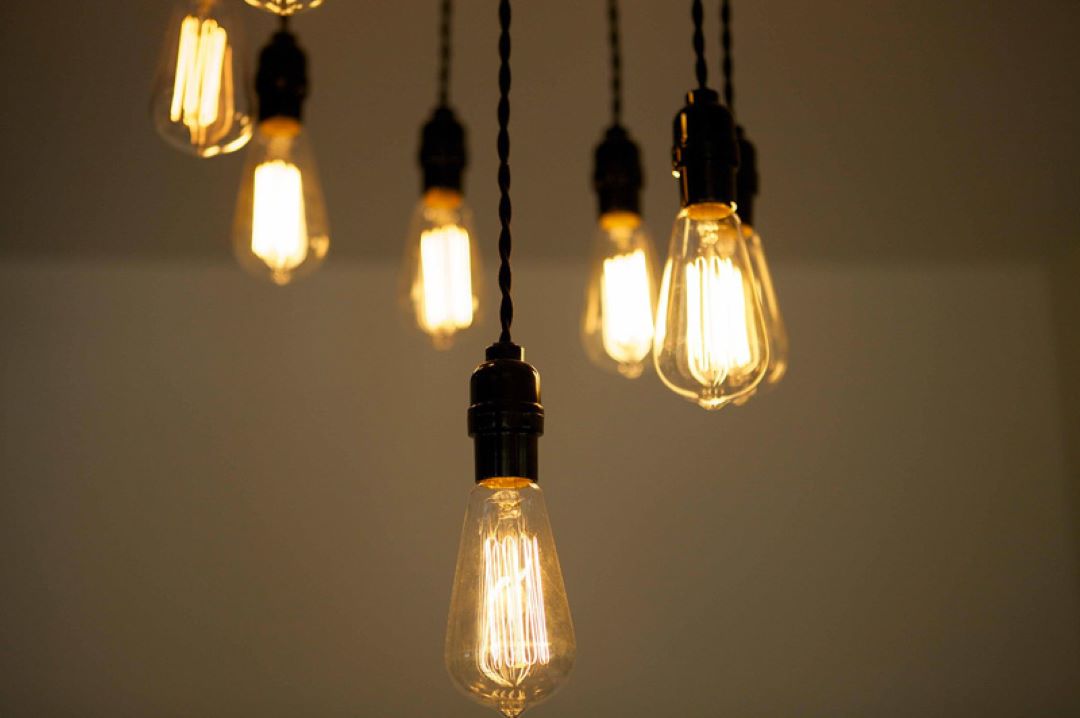
What happens if you wire a 2 way switch wrong?
If you wire a 2 way switch wrong, several issues could arise, affecting everything from functionality to safety. Incorrect wiring might cause the other end of the circuit to malfunction, meaning that when the first switch is flipped, the light intended to be controlled may not turn on or off as expected.
This happens because the wires that should be connected to the com terminal and the switched live terminal are misplaced or mixed up, disrupting the flow of power to the bulb.
In settings like homes or industrial locations where precision is key, such errors can lead to confusion or even electric shock if the circuit is not correctly isolated during the attempt to fix the issue.
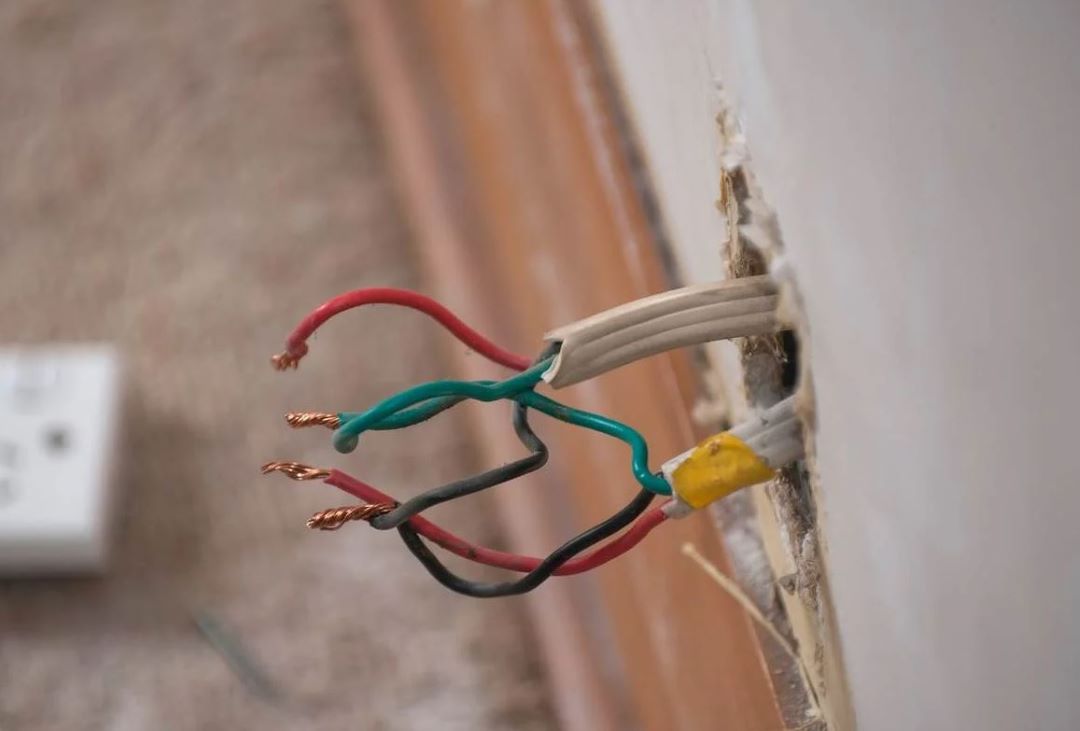
Furthermore, if the other switch in the system is not correctly wired to the light fixture, it won't properly control the lights, leading to a situation where the light turns on or off unpredictably.
This is especially problematic in systems involving digital electronics, where precise wiring is crucial for the correct operation of devices.
Therefore, ensuring that all wires are correctly connected and that power is safely and effectively routed through the circuit is paramount to both the functionality and safety of electrical installations.

What is L1 and L2 on a light switch?
On a light switch, the L1 and L2 are known as terminals that play a crucial role in the flow of electricity.
A two way light switch has 3 terminals, L1, L2 along with the com terminal, form the integral points at which cables or wires are connected to facilitate the operation of two-way switch wiring.
The com terminals, or common terminal, is pivotal in creating a circuit when switches are connected, allowing electrical switches to control a light or device from two different locations.
Proper wiring is essential; an incorrect electric circuit connection can disrupt the flow and functionality of the circuit, underscoring the importance of accurate alignment of the wires to their respective terminals in the context of switch wiring.
Lighting switches typically have L1, L2, L3 terminals, read what do L1, L2, and L3 on light switches mean and what are the types of lighting switches in Singapore.
How do you wire a 2 way switch to a single?
You wire a 2 way switch to a single by connecting the live wire/ line wire from the power source to the Common (C) terminal (com terminal) on the two way switch, and then link one of the terminals (either L1 or L2) on the two way switch to the terminal on the single pole switch.
The two way switches has three terminals; a Common terminal/ com (C) terminal as well as an L1 and L2 terminal. For two way switching, you will need to connect both L1 and L2. For one way switching, as you have one less connection, you only need to use the L1 connection. You can leave the L2 connection blank.
This action reroutes the current, allowing the control of a light from two different locations with the two way switch and from one location with the single pole switch. The correct arrangement of wires and terminals is crucial to ensure the system works efficiently and safely.